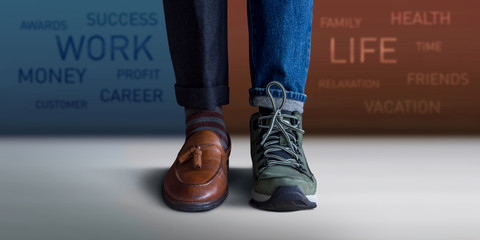
Introduction
Work plays an important role in the lives of most people - whether paid or unpaid, work provides an important routine, helps shape identity, and gives purpose to existence. On average, every person will work a minimum of 90,000 hours or 1/3rd of their lives, prompting many to ask, is work-life balance possible? It is!
The general understanding of work-life balance is the division of one's time and focus between working and family or leisure activities. Naturally, a 50/50 even split is often impossible, prompting terms like work-life integration, fit or even harmony to emerge. Maintaining a healthy combination in time and energy spent in professional and personal pursuits is important for health and relationships, and improves productivity and performance, reducing stress and burnout. Studies have shown that employees who have a better work-life balance are more productive, creative, and motivated. Good work-life balance means harmony between the different aspects of life including career, relationships, physical health, spiritual health, self care, and family. The benefits gained from each support strengthen the others.
Many workers fear the risk of job insecurity and the need to consistently prove themselves or go a step further than they are expected to, to maintain a positive reputation at work, at the cost of their personal lives. Not knowing what to do outside of work is another barrier to work life balance. It can be difficult to take time off work when life outside of work lacks purpose or excitement.
Actions to improve work life balance.
Set boundaries and work hours.
• Be realistic about what can be achieved in the time you have set. Try not to set an unrealistic schedule or deliverables as this can lead to unnecessary pressure and demotivation if things don’t go to plan. And at the end of the workday, put the phone or laptop away.
Understand priorities and plan.
• Understanding that most things are not urgent is crucial to maintaining work-life balance. Setting priorities and having a plan for executing them will help to keep boundaries consistent and allow time for both the personal and the professional commitments.
Take care of your health
• Make physical, mental, and emotional health a main priority. First steps are regular, light exercise; adequate sleep; and managing stress and anxiety.
Learn to say no.
• If you already have a full workload (personal or professional), practice saying no. Sometimes we all feel the pressure to take on more than we can handle but this can lead to being overwhelmed and exhausted. Saying no can be difficult - start with the small things, the "nice to have" or easier to reject propositions to build your confidence.
Conclusion
It is important for each of us to find the right balance between professional and personal priorities that works for us. Remember, this is not a static thing, and may change on even a daily or weekly basis. What is important to allocate the different emotional, physical, mental and time resources we each have at hand in a way that corresponds to our personal and professional goals.
If you want to create a more balanced life, spend some time to first understand why that balance is important to you and where you feel you fall on the spectrum of balancing personal and professional now. There are a range of resources online from self-questionnaires to mathematical calculations to help you understand this in the way you prefer.
Having a more balanced lifestyle isn’t easy and it requires one to prioritize what is important, get comfortable with saying no, switching off from devices of all sorts, and taking control of one's time and career. And it is worth it.

